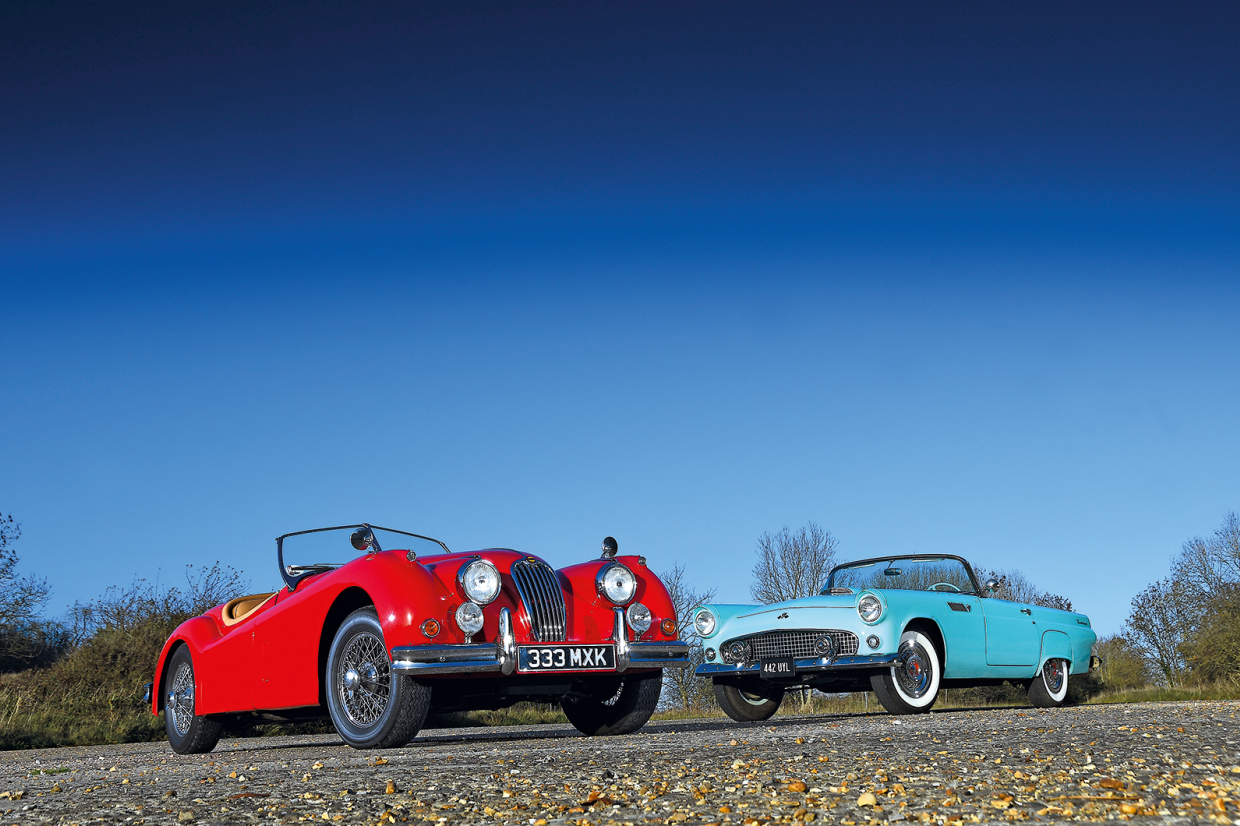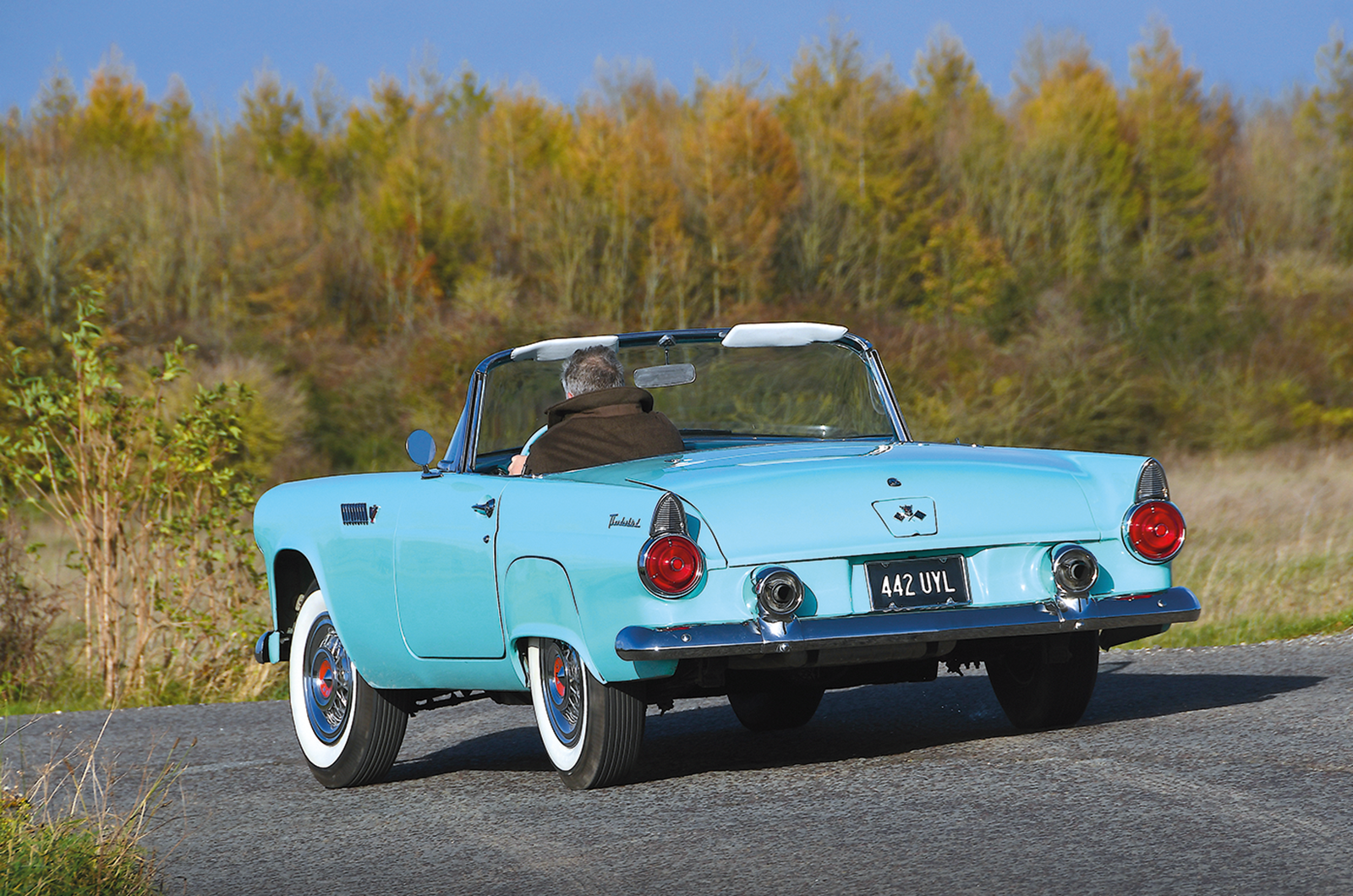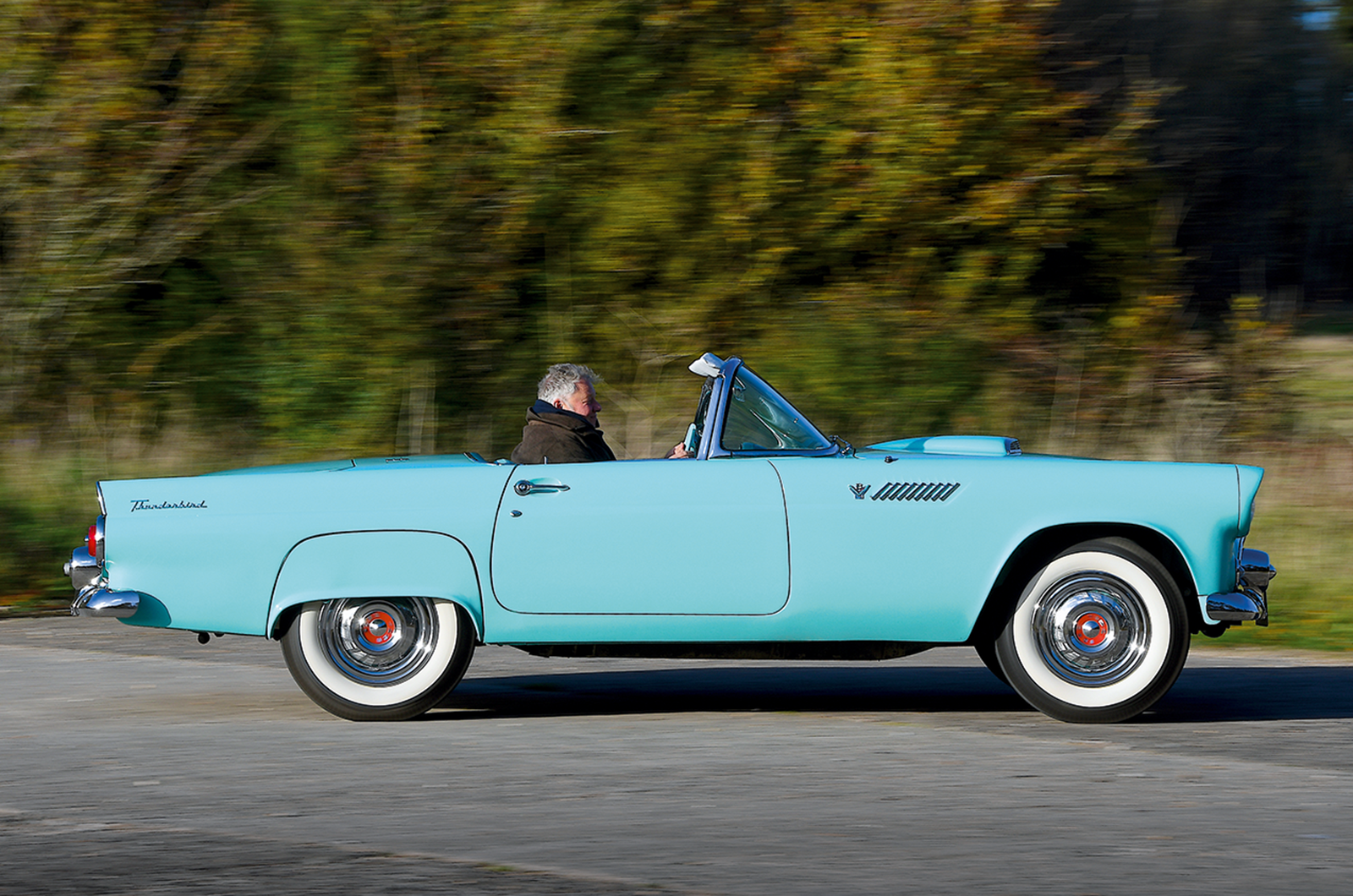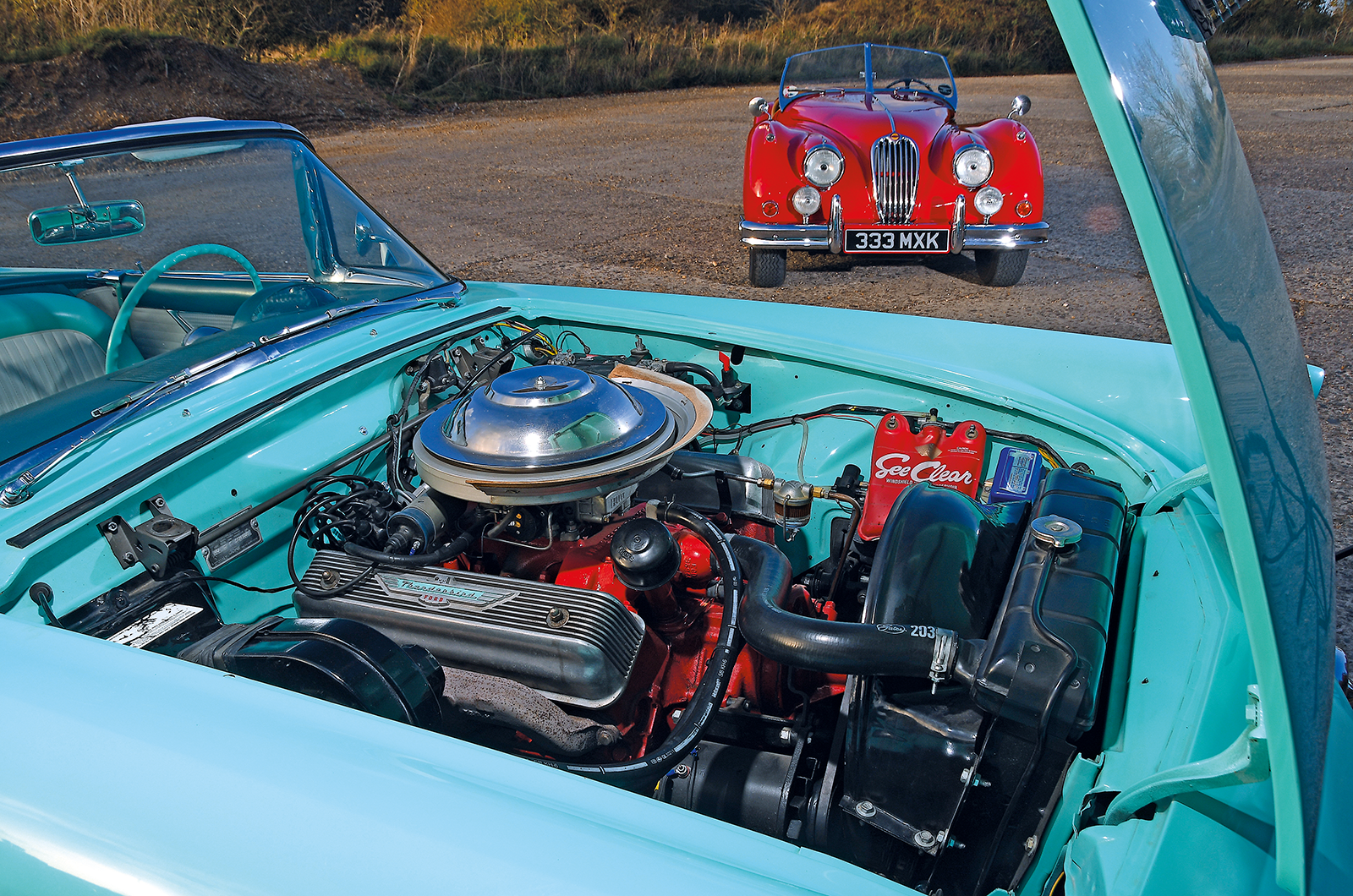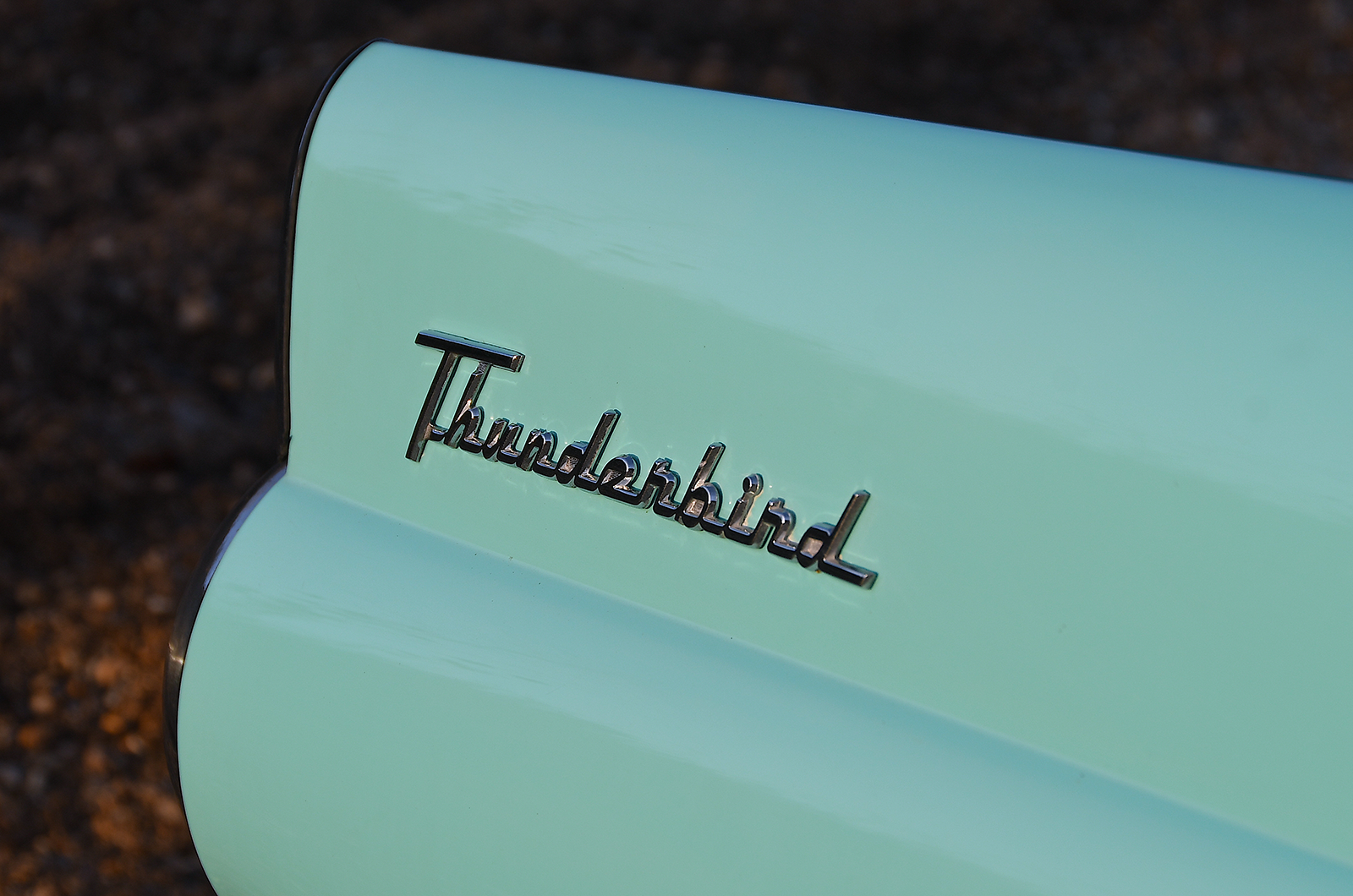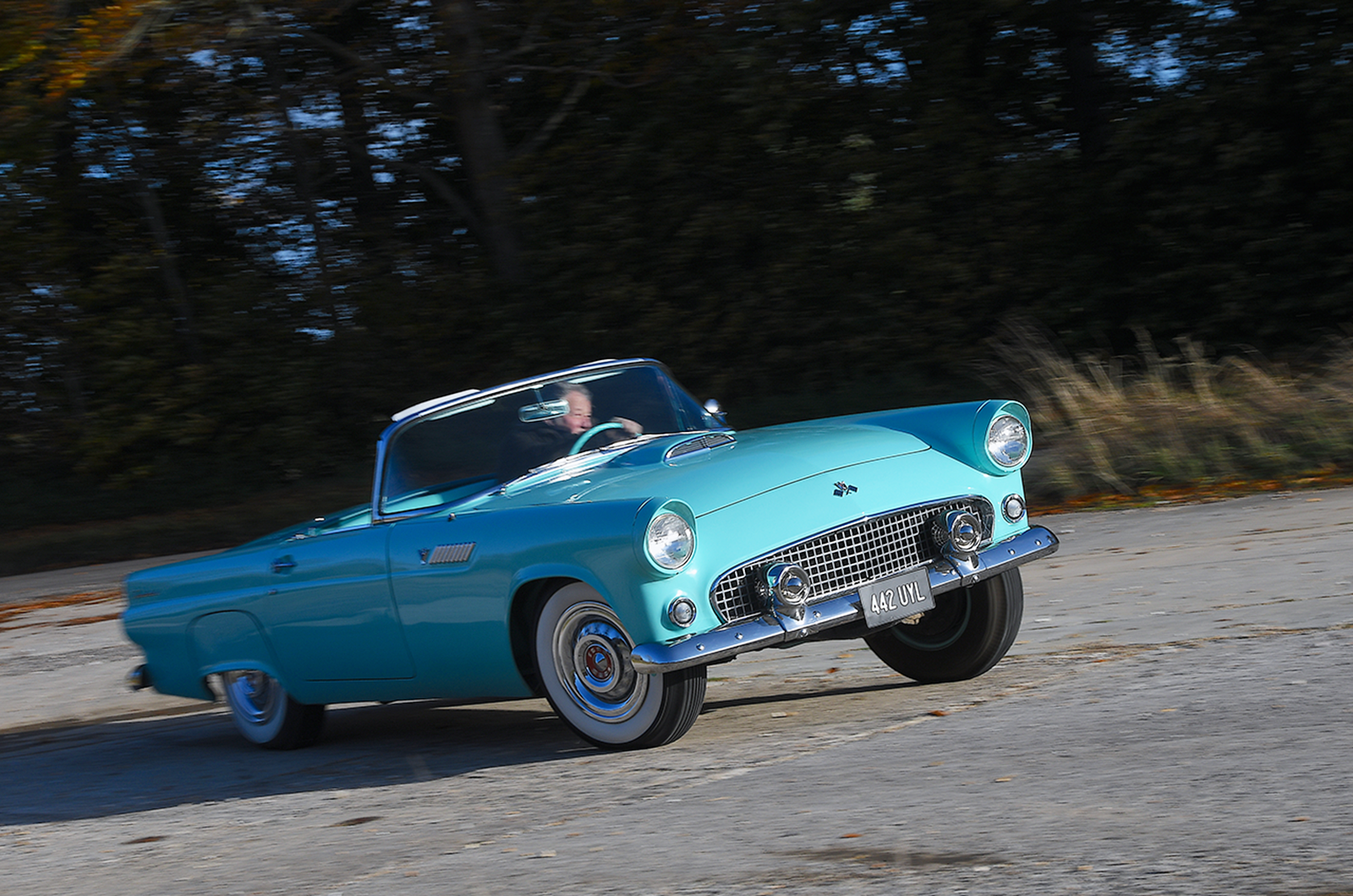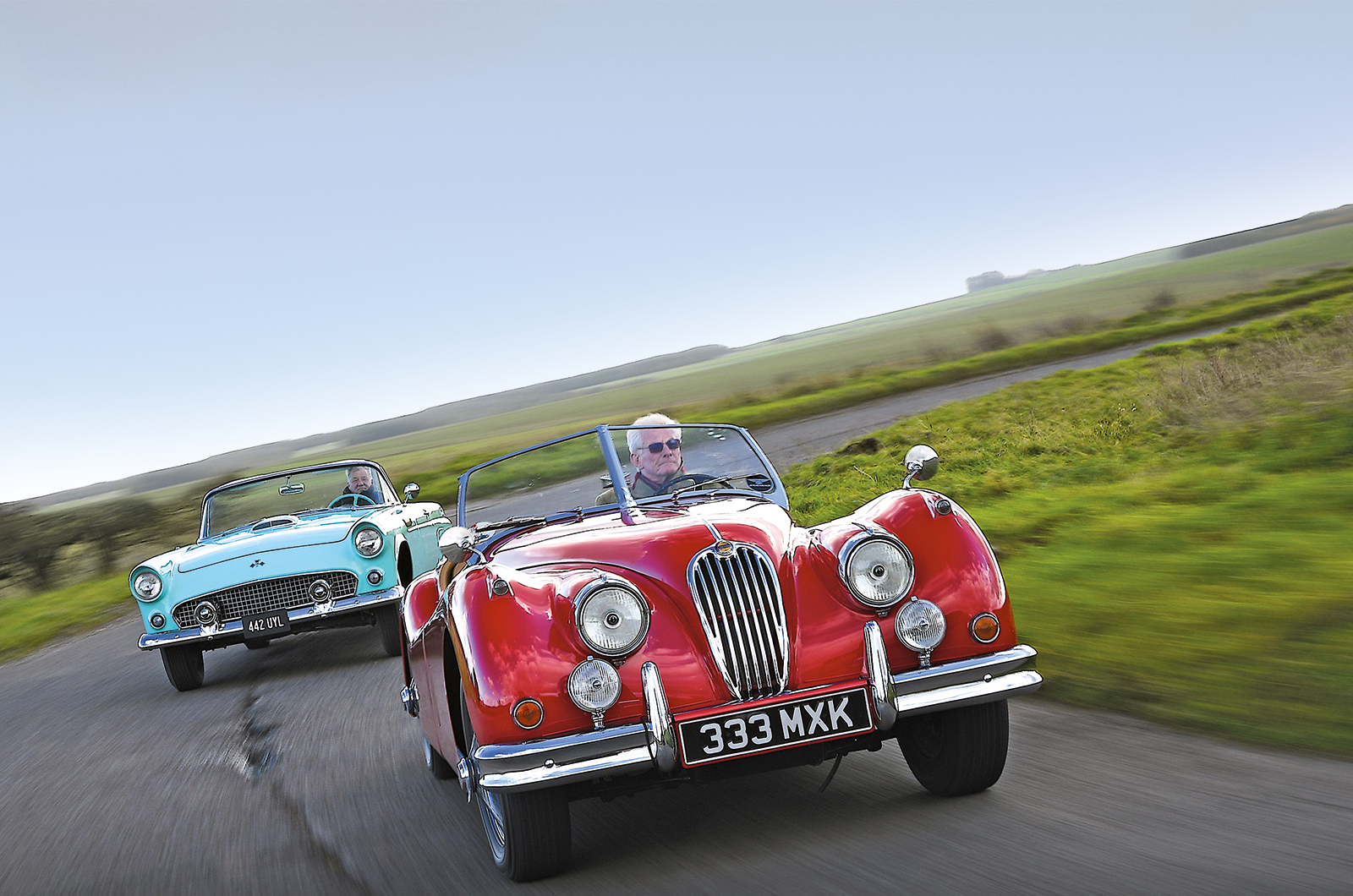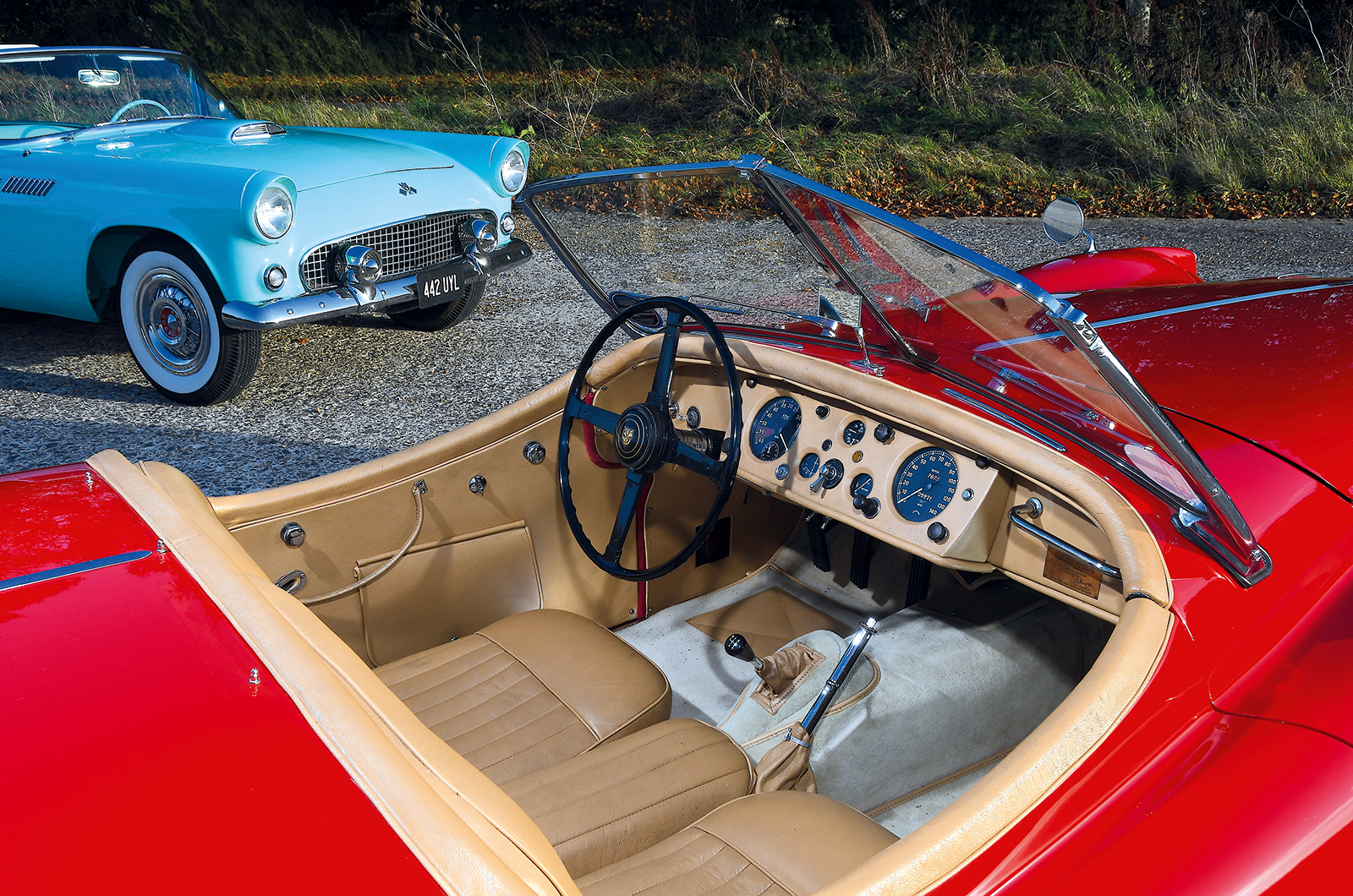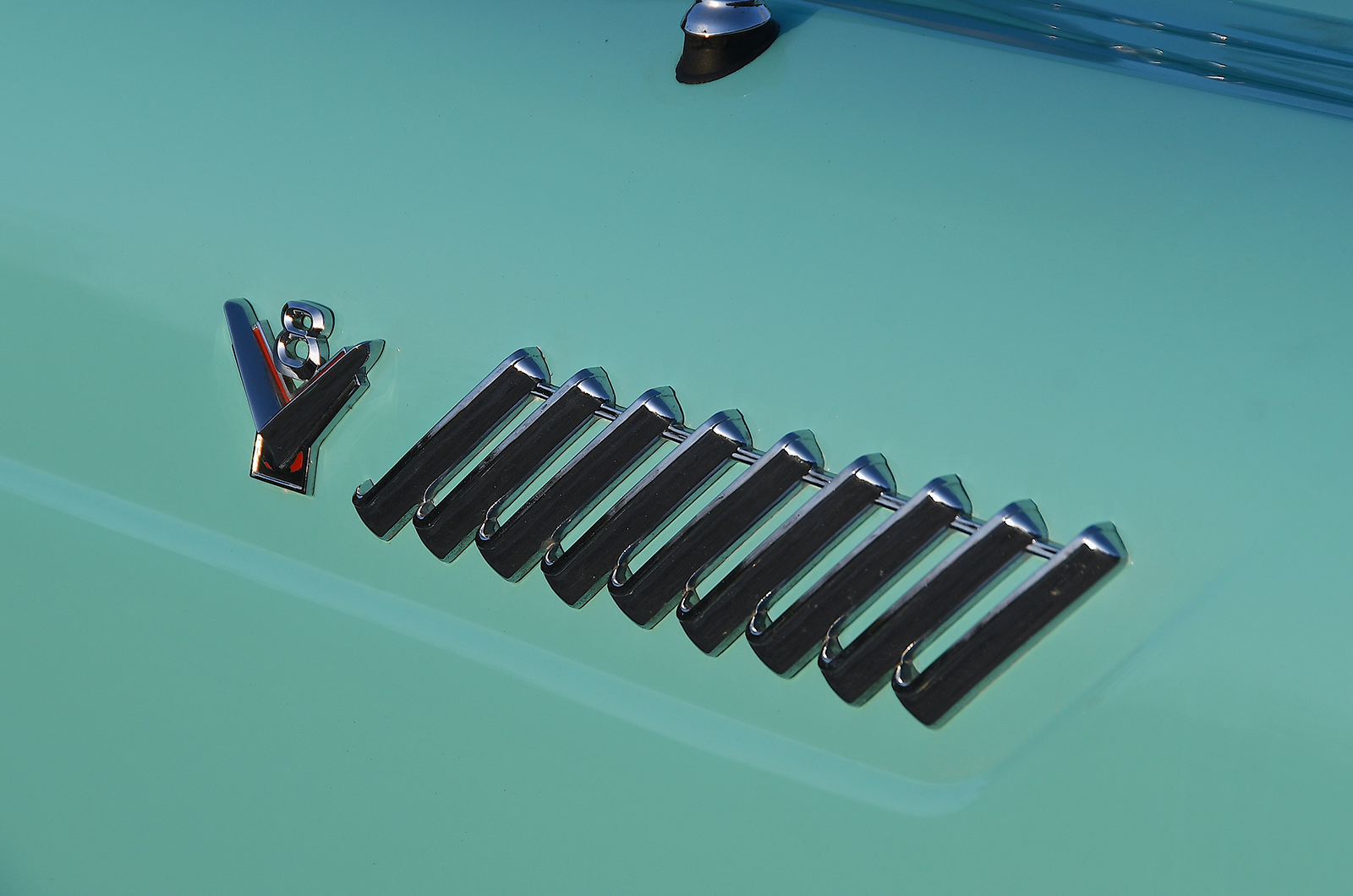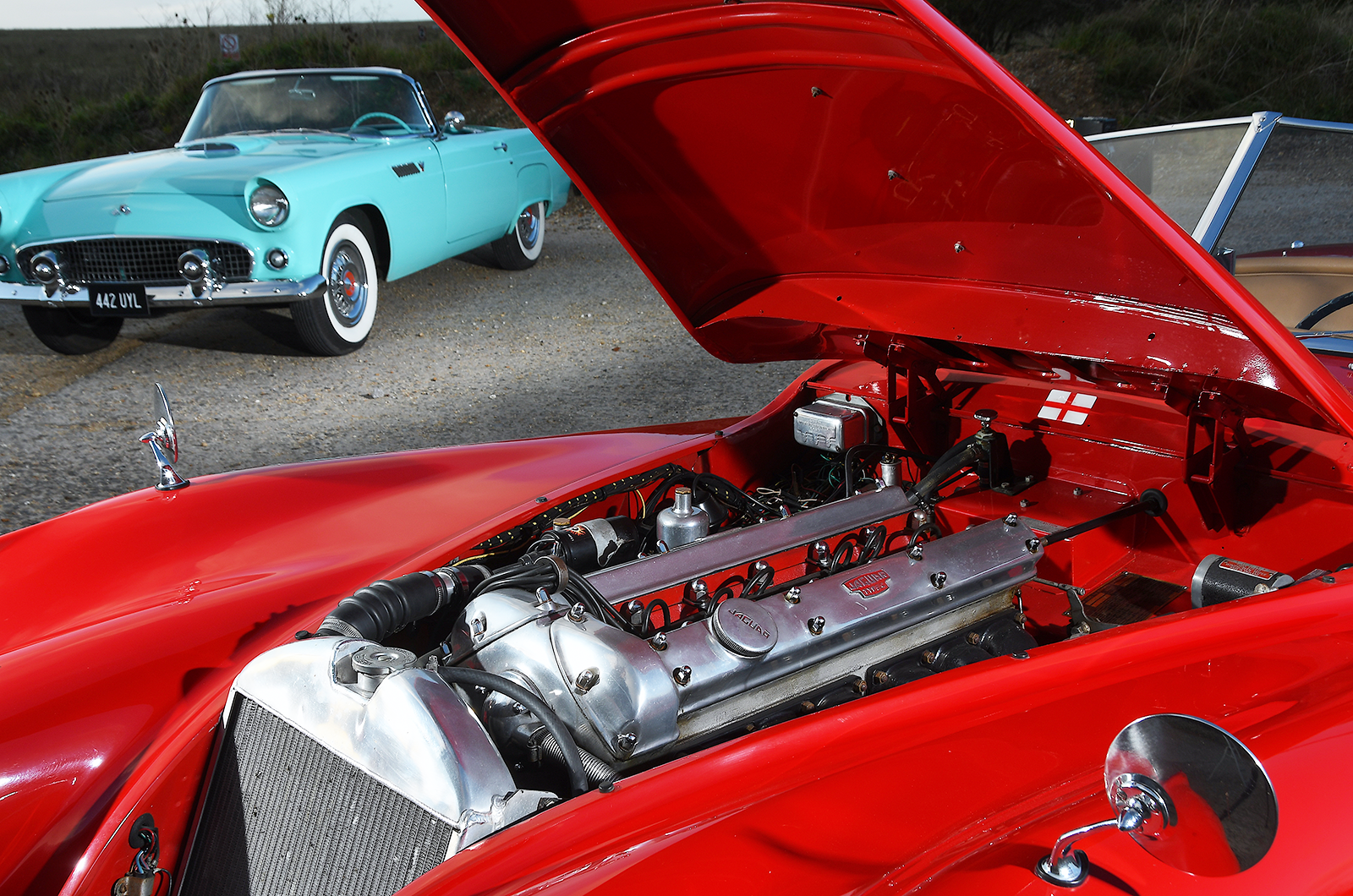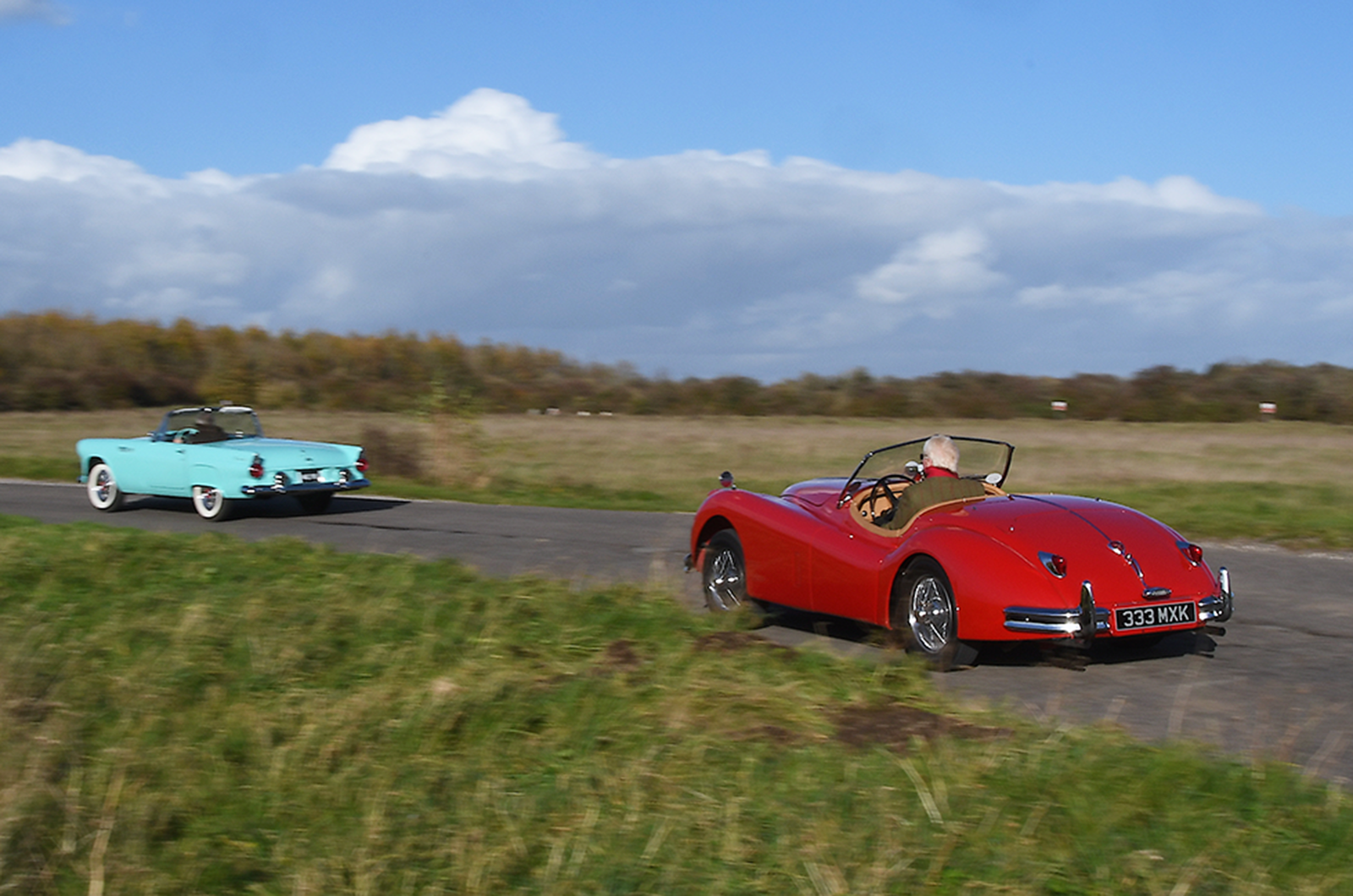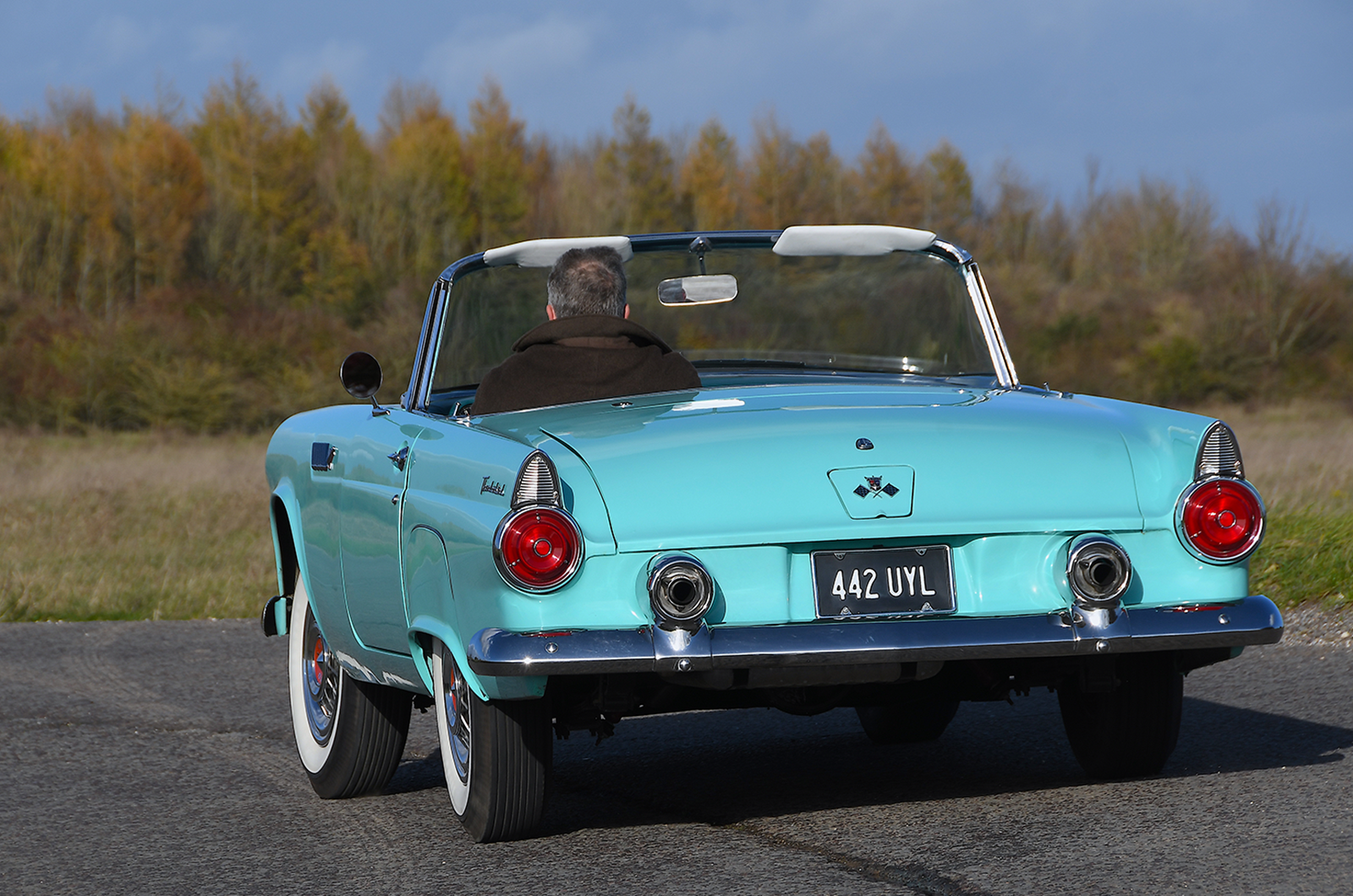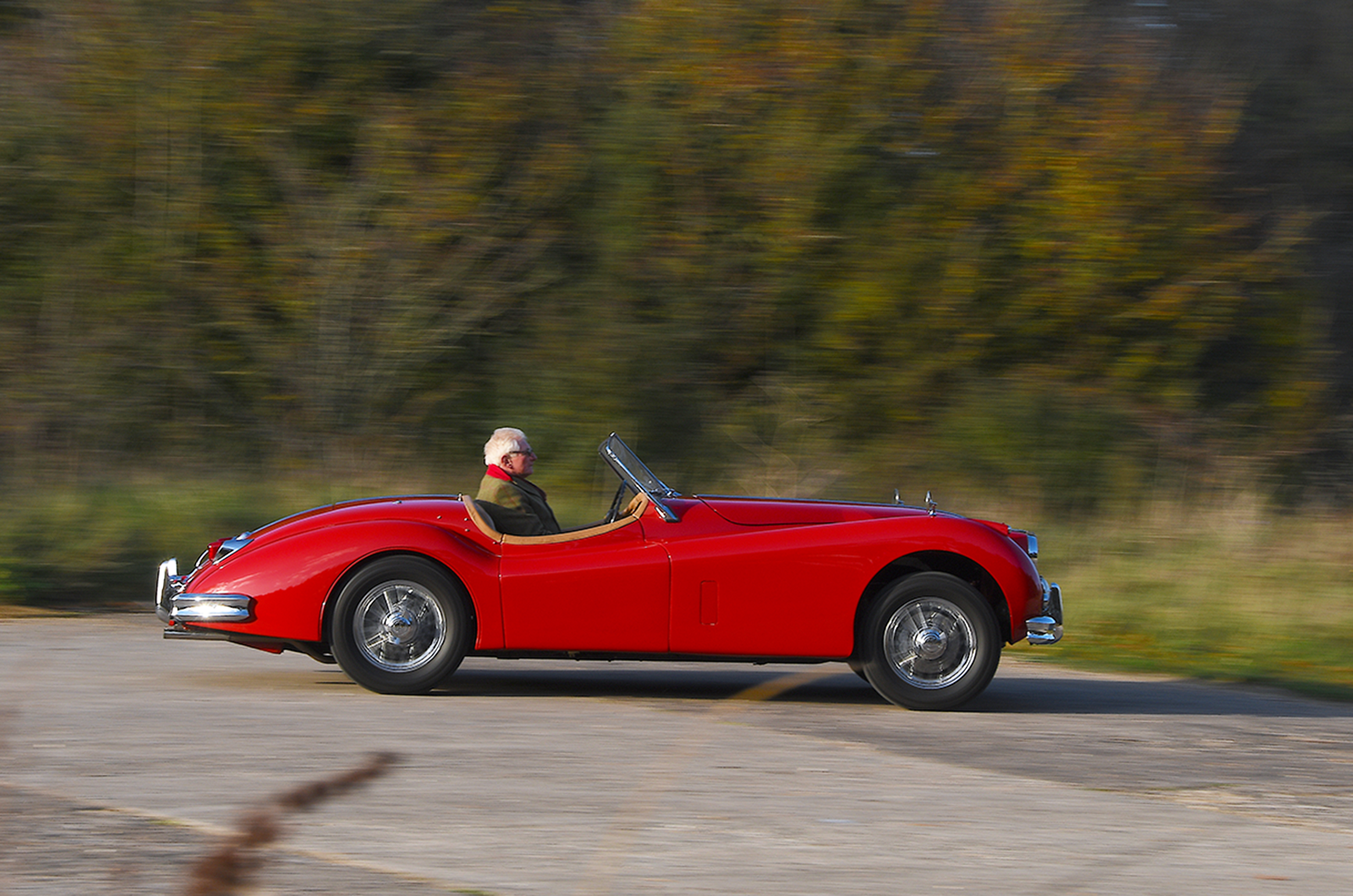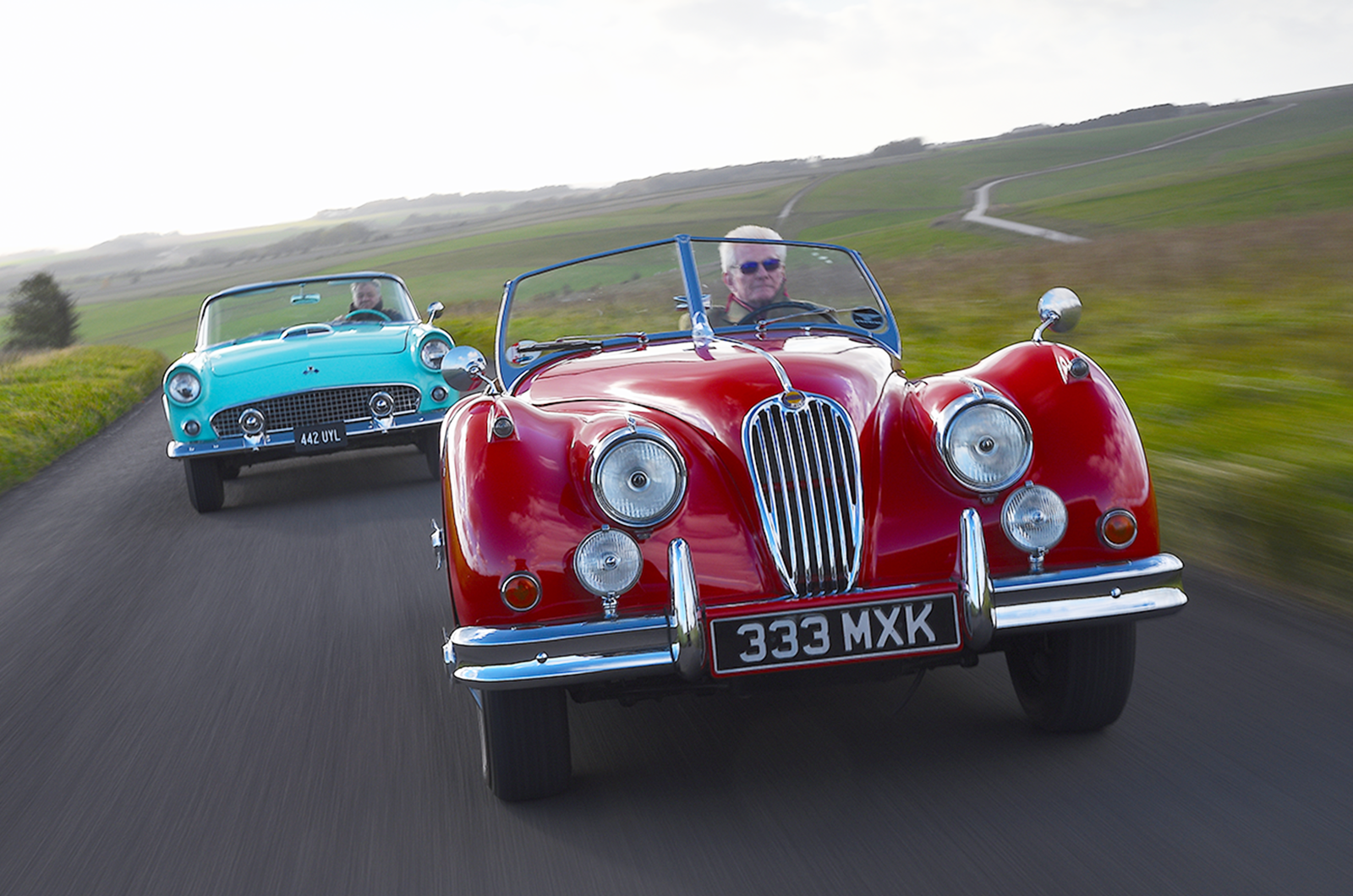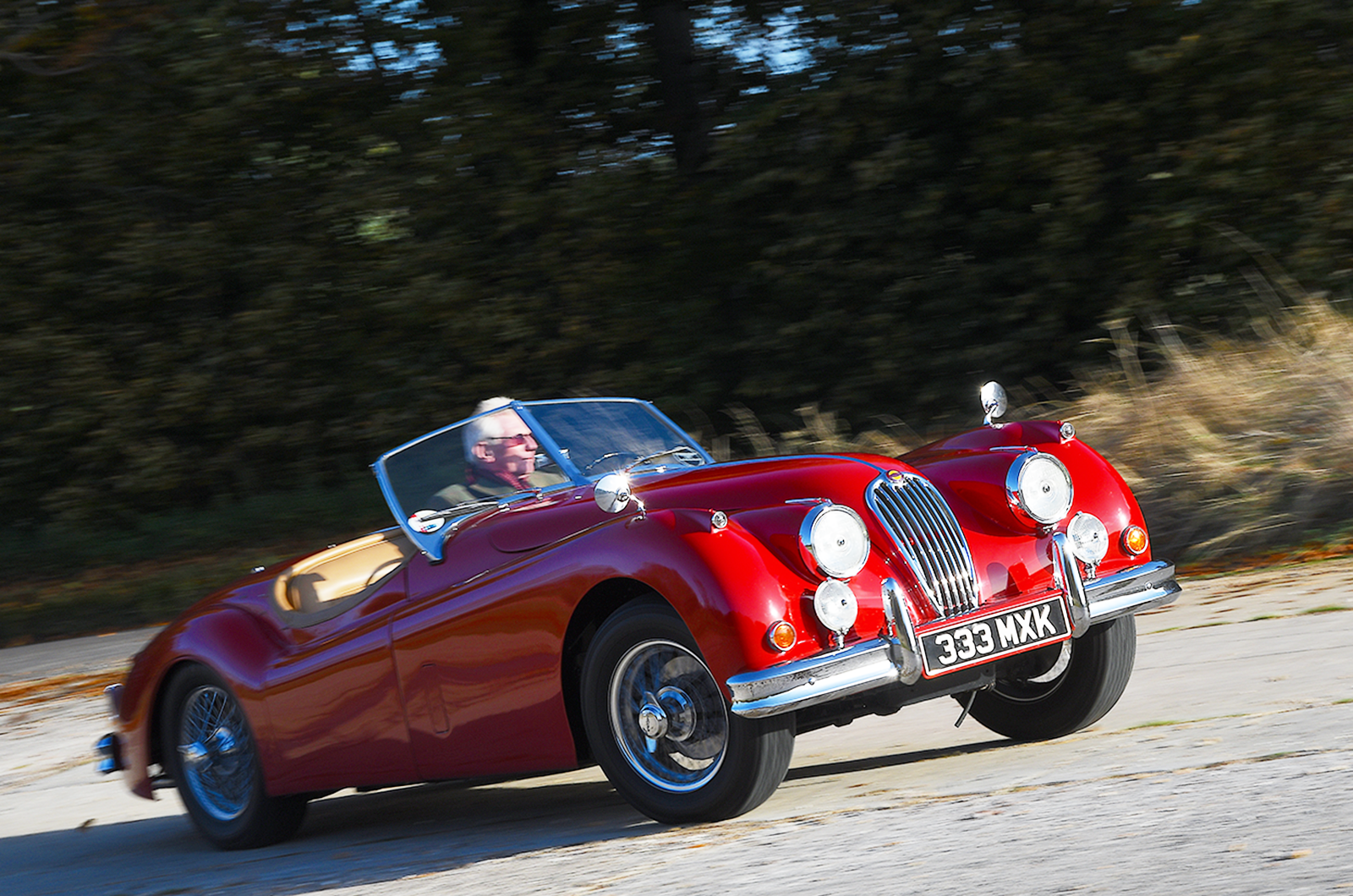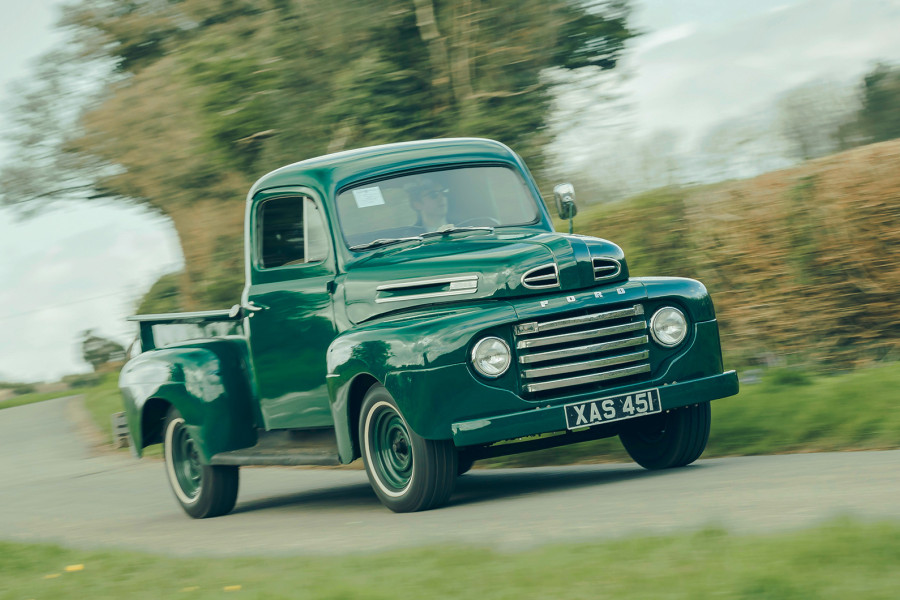The smooth growl of the Jaguar is discreet but unmistakeable, whereas the Thunderbird has the lusty alternating burble of a motor launch that rocks the car gently on its soft springs when you blip the throttle.
Revving its V8 beyond 4000rpm is fruitless, whereas the XK ‘six’ winds out quite happily to 5000rpm with solid pull in every gear and torque to burn.
In first, the cranked lever of its Moss gearbox almost lies horizontally against the carpet.
It won’t be rushed and howls evocatively in its straight-cut lowest ratio as you pull away.
The Thunderbird’s manual gearbox requires careful use
The other gears are synchronised but still require careful timing for smooth shifts.
This Thunderbird is a rare and desirable manual, yet you can’t help feeling that it would be a much nicer car as an automatic.
Its clutch is light and forgiving, but while the short lever promises nifty changes there is something ponderous and agricultural about its movements.
Not that you need to use it very much, such is the V8’s torque: the owner of this car has snapped a halfshaft or two by letting rip from a standstill in bottom gear.
Push the Jaguar XK140 and you will be rewarded
The Borg-Warner overdrive takes 30% off the engine speed in second and top, and engages automatically at 27mph in direct top.
To disengage, you simply kick down on the throttle or push forward the lever marked ‘Overdrive’ under the dashboard.
In a straight-line burn-up the two cars feel quite evenly matched: a glance at contemporary figures seems to bear out this impression.
But what those numbers don’t tell you is just how stable and secure the XK140 feels when extended, rewarding the hefty inputs required by its steering and brakes.
By contrast to the Jaguar (front), the Ford (rear) can be a handful, although it can still hold its own on a country road
Not so the Thunderbird.
You steer this pastel shaded showboat more by eye than feel, feeding lock in and out against almost no resistance because this is full power takeover – rather than assistance – that commits the additional sin of being low-geared.
You are kept busy holding the car pointing straight ahead and are likely to scare yourself should you jab the brake pedal too aggressively: the grabby, over-boosted drums hardly ever pull up the car in a straight line.
It holds a steady enough line through country lane curves, with roll that looks more dramatic from without than it feels from within.
There is no doubt that the more agile Jaguar is the better driver’s car
But to push the Thunderbird towards its modest limits is to misunderstand the gentle nature of a car that wants to canter rather than sprint.
To enjoy the Ford, you accept its invitation to come along for the ride without being party to the finer detail of the driving experience, a passenger aboard a piece of softly sprung road theatre that only really looks at ease wafting along the wide, palm-lined boulevards of California.
In many ways the Jaguar is an even more ‘personal’ experience.
Set up to understeer, it can be placed to the inch on the road, as you measure steering lock against your choice of gear and throttle position so that making meaningful progress in this near-70-year-old two-seater is as instinctive as breathing to anyone even half sympathetic to its lusty, semi-vintage character.
The Ford’s distinctive style still appeals and turns heads today
There is nothing vintage about the Ford.
In 1955 it epitomised the power-assisted, laboursaving aspirations of the modern world, yet it was also the sportiest thing to emerge from North America since the Stutz Bearcat.
It proved the soundness of its creators’ judgement by outselling the Corvette handsomely.
As successive models grew in size and ostentation in the ’60s, the 1955-’57 T-birds became more coveted and were among the first post-war American cars to be considered ‘collectible’.
“In a straight-line burn-up the two cars feel quite evenly matched: a glance at contemporary figures seems to bear out this impression”
Today prices of early ’Birds look quite soft, not only compared to Corvettes, XKs and muscle cars but even later examples of the same species – an indication of shifting demographics.
The dream car of its era, fetishised in popular music and film, it emphasised US styling, comfort and luxury over the dubious hardships endured by buyers of traditional sports cars from the old world.
It is hard not to like the Thunderbird.
In a time that’s short on laughs it makes you smile, and that’s got to be a good thing.
Images: John Bradshaw
Thanks to Cotswold Classic Car Restorations for the Thunderbird and SLJ Hackett for the Jaguar
Factfiles
Ford Thunderbird
- Sold/number built 1955/16,155
- Construction steel chassis, steel body
- Engine all-iron, ohv 4785cc V8, Holley four-barrel carburettor
- Max power 193bhp @ 4400rpm
- Max torque 280Ib ft @ 2600rpm
- Transmission three-speed manual, optional overdrive, RWD
- Suspension at front independent, by double wishbones, coil springs, anti-roll bar rear live axle, semi-elliptic leaf springs; telescopic dampers f/r
- Steering power-assisted worm and roller
- Brakes drums, optional servo
- Length 14ft 7in (4445mm)
- Width 5ft 10¼in (1784mm)
- Height 4ft 3½in (1308mm)
- Wheelbase 8ft 6in (2591mm)
- Weight 3472Ib (1575kg)
- Mpg 18
- 0-60mph 8.8 secs
- Top speed 115mph
- Price new $2692
- Now £15-70,000*
Jaguar XK140 SE OTS
- Sold/number built 1954-’57/3354
- Construction steel box-section chassis, steel body
- Engine iron-block, alloy-head, dohc 3442cc straight-six, twin 1½in SU carburettors
- Max power 210bhp @ 5750rpm
- Max torque 213Ib ft @ 4000rpm
- Transmission four-speed manual with overdrive, RWD
- Suspension at front independent, by double wishbones, torsion bars, anti-roll bar rear live axle, semi-elliptic leaf springs; telescopic dampers f/r
- Steering rack and pinion
- Brakes drums
- Length 14ft 8in (4470mm)
- Width 5ft 4½in (1640mm)
- Height 4ft 7in (1395mm)
- Wheelbase 8ft 6in (2590mm)
- Weight 3130Ib (1420kg)
- Mpg 18
- 0-60mph 8.5 secs
- Top speed 121mph
- Price new £1127
- Now £100-130,000*
*Prices correct at date of original publication
READ MORE
Heavy metal thunder: Chevrolet Chevelle, Pontiac GTO, Plymouth SuperBird, Dodge Charger and Ford Torino
Is the reborn Ford Thunderbird really that bad?
The greatest ’50s sports cars: XK120 vs MGA, AC Ace, Healey 100 & TR3A
Martin Buckley
Senior Contributor, Classic & Sports Car
